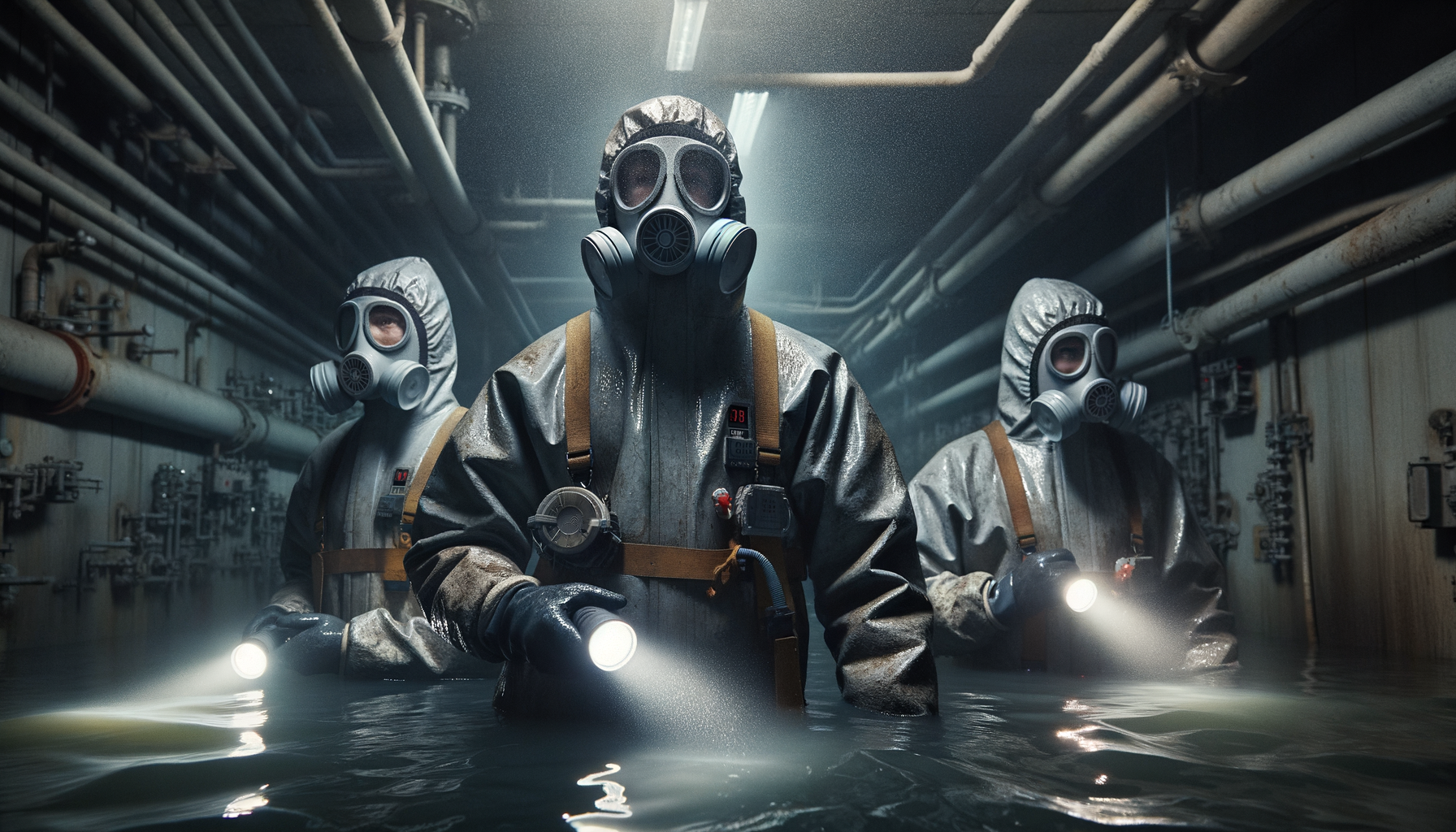In the chaotic days following the 1986 Chernobyl disaster, three Soviet engineers undertook an exceptionally risky mission, walking into the heart of a ravaged nuclear plant. These individuals, known as the “Chernobyl divers,” made choices that saved countless lives, solidifying their place in history as unsung heroes of one of the world’s worst nuclear incidents.
Background and Mission Overview
The explosion at Chernobyl on April 26, 1986, was a catastrophic event that sent shockwaves through the region and the world. With the reactor spewing radioactive material into the atmosphere, the situation was dire, and quick action was necessary to avert a second explosion of even greater magnitude.
- Who They Were: Alexei Ananenko, Valeri Bezpalov, and Boris Baranov were experienced engineers and up to the task at hand.
- The Goal: Drain irradiated pools in the plant’s basement to halt any chance of corium mixing with the water, which could result in a second catastrophic explosion.
Facing Extreme Conditions
The mission was fraught with peril from the onset. Radiation levels were astronomically high, yet the dosimeters maxed out early on, unable to measure the true extent of the danger.
- The divers navigated through dark, flooded passageways, their protective masks muffling their voices and isolating them in a daunting underwater labyrinth.
- Exposure to these conditions for more than thirty minutes would likely be lethal, and the water reaching up to 45°C made their task even more grueling.
The Weight of Urgency
With each passing moment, the situation grew more urgent. Thousands in the area faced an existential threat, and the engineers had little time to act.
- Residents of nearby Prypiat evacuated swiftly, initially believing they’d return within a few days, unaware of the long-term impact.
- Soviet authorities withheld information from the public to maintain political stability, leaving many unaware of the full scope of the danger.
- Radioactive clouds continued to poison the environment, escalating the need for a swift resolution.
The Critical Mission Underway
- Despite promises of incentives and rewards for their families, the engineers undertook a mission inherently about selflessness and bravery.
- They trudged through the hazardous water, guided by a single dim light that eventually revealed the valves they needed to operate.
- The successful execution of their mission allowed for the contaminated water to be drained, mitigating the immediate risks and staving off further devastation.
| Factor | Challenge Faced |
|---|---|
| Radiation Levels | 500 times higher than detected by equipment |
| Temperature | 45°C water temperature |
| Time Limit | 30 minutes until lethal exposure risk |
Aftermath and Ongoing Legacy
Following their mission, efforts to control the situation at Chernobyl continued. Despite containment, the plant remains radioactive, highlighting the persistent nature of the disaster’s consequences.
- Long-Term Impact: The site requires ongoing management, with estimates suggesting full depollution will take thousands of years.
- Role of Liquidators: Thousands known as “liquidators” worked tirelessly at great personal risk, ultimately exposed to levels far beyond safe limits.
Recognition and Remembrance
The divers’ deeds were later brought to light and glorified in the mini-series “Chernobyl,” spotlighting their daring yet often understated bravery.
- Contrary to dramatic portrayals, not only did all divers survive, but two were also later honored for their contributions with Ukraine’s “Order for Courage.”
- Alexei Ananenko, upon reflecting on his efforts years later, expressed a humility that underscored the ethos of unsung heroism, stating simply, “It was my job.”
As history continues to evaluate the long-lasting effects of the Chernobyl disaster, the heroic actions of these engineers remind us of the human capacity for bravery amidst unimaginable danger.

